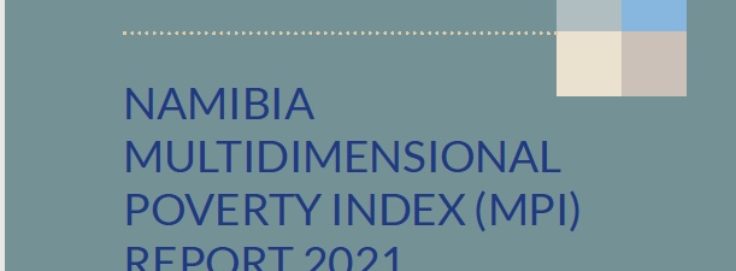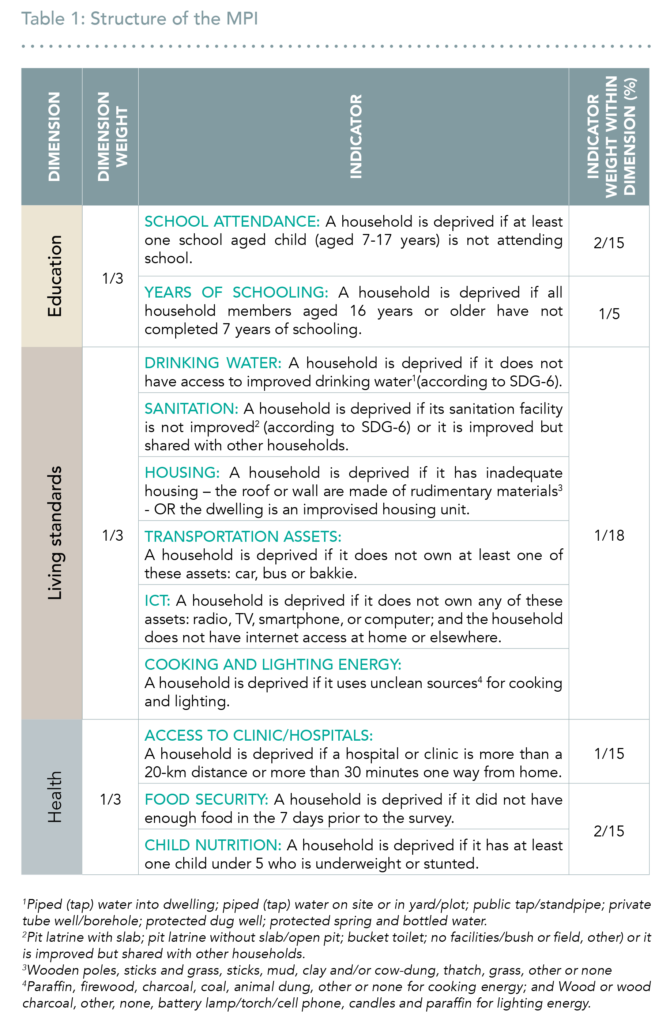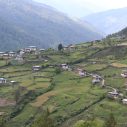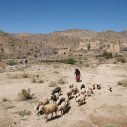
Search
Namibia launches national MPI to guide poverty reduction

10 June 2021 – Namibia launches its official national Multidimensional Poverty Index (MPI) today to further inform and guide its poverty reduction strategies. It joins the growing number of countries in the region complementing monetary poverty analysis with multidimensional poverty measures.
While monetary poverty analysis focuses solely on consumption and expenditure, the Namibian MPI will provided more detail on the nature of people’s poverty, the differences between demographic groups and regions, and the overlapping and interlinked deprivations experienced across Namibia.
Developed by the Namibia Statistics Agency (NSA), the Namibian MPI will serve as a strategic tool to inform budgeting and policymaking, while also providing baseline data for measuring progress towards eliminating poverty in all its forms in line with the Sustainable Development Goals.
The report, launched today, found that while progress has been made in reducing monetary poverty in Namibia from 27.6% in 2004 to in 2016, more than 43.3 percent of Namibia’s population are still living in multidimensional poverty.
Based on data from the Namibian Household Income and Expenditure Survey (NHIES 2015/16), the MPI measures the deprivations poor people face based on three dimensions: ‘Education’, ‘Health’ and ‘Living Standards’. These are measured across 11 weighted indicators: ‘school attendance’, ‘years of schooling’; ‘drinking water’, ‘sanitation’, ‘housing’, ‘transportation assets’, ‘ICT’, ‘cooking and lighting energy’; ‘access to clinic/hospitals’, ‘food security’ and ‘child nutrition’. If a person is deprived in 30% of these weighted indicators, they are considered multidimensionally poor.
While the incidence of poverty in Namibia is 43.3%, the average intensity of poverty is 44.0%, meaning that poor people in Namibia experience, on average, 44.0% of the weighted deprivations. The Multidimensional Poverty Index (MPI), which is the product of incidence and intensity is 0.191.
The report highlights where multidimensional poverty is greatest across Namibia. Rural areas were found to be poorer than the urban areas, reported at 59.3% and 25.3%, respectively. About 64% of children who live in rural areas are multidimensionally poor compared to 30% in urban areas. Across the fourteen administrative regions of Namibia, the incidence of multidimensional poverty was highest in Kavango West (79.6 %), Kavango East (70.0 %) and Kunene (64.1 %). The incidence of multidimensional poverty is higher among female-headed households (with a rate of 46%), than male-headed households (with a rate of 41%).
Disparities were also observed across demographic groups based on language. The highest incidence of multidimensional poverty was reported amongst the population whose main language was Khoisan (93%), followed by Rukavango (68%) and Zambezi (54%). This is in stark contrast to populations whose main spoken languages were English and German (each with 3%).
The report also found between household size and multidimensional poverty. As household size increases, multidimensional poverty also increases. The incidence is highest for households that have 16 or more members, at 72.8% compared to 33.4% for a household with less than 6 members.
Turning to age groups, the youngest children in Namibia are the poorest with the highest incidence of poverty reported among children aged 1–4 years (56%), followed by 5–9 years (50%) and 10–14 years (48%). The lowest headcount ratio (33%) is reported for the age group of 25–29 years. In Namibia, approximately 16% of children aged 0–17 years are both multidimensionally and monetarily poor.
The Namibian MPI was developed as part of a collaboration led by the Namibia Statistics Agency (NSA), with UNICEF, UNDP, UNFPA, and OPHI. The process also included consultations with the national Steering Committee, comprised of representatives from: the Ministry of Finance; the Ministry of Education, Arts and Culture; the Ministry of Agriculture, Water and Land Reform; the Ministry of Urban and Rural Development; the Namibia University of Science and Technology; the University of Namibia; the Institute for Public Policy Research; the National Planning Commission; the Ministry of Gender Equality, Poverty Eradication and Social Welfare; and the Ministry of Health and Social Services. The Government of Namibia will continue publishing and enhancing the MPI once new data become available, to provide evidence to inform poverty reductions strategies in line with the National Development Plans (NDPs) and the SDGs.

















